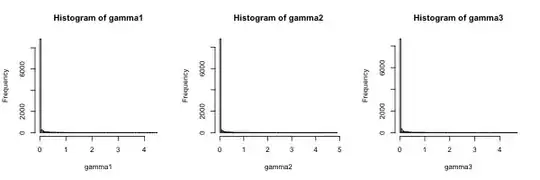As a relief of my reply-as-a-comment, here's a more qualified answer. This kind of graphical output is usually called a dot plot or a dot chart, after Cleveland.1 One dimensional scatter plots are also called dotplots in some statistical packages. As @mdewey mentioned, this can also be used to show the mean effect of a variable (with its standard error or confidence intervals) on a given outcome, but in this case each "point" are a different kind of aggregated statistic (i.e., the average of numerical values, rather than a frequency of count data).
It is a nice alternative to more classical bar charts, because of its inherent low data-ink ratio, valued by Edward Tufte.2 Moreover, this kind of graphical representation fits nicely into the design of trellis displays, by Becker and coll.,3 which among other things allow for facetting (i.e., conditioning in statistical language) and more (e.g., "shingle") --- Ross Ihaka has a nice presentation on this aspect in his Topic in Computational Data Analysis and Graphics course.
You will probably find many such illustrations on this site, but the main R packages that are generally used are the builtin dotchart function, its lattice counterpart, dotplot, or the ggplot2 package, where geom_point can safely replace geom_bar or geom_hbar (note that geom_dotplot is the equivalent of R's builtin stripchart, for one dimensional scatter plots). The UC Business Analytics R Programming Guide provides some nice illustrations using the latter approach as well.
References
1 Cleveland, W.S. and McGill, R. (1984). Graphical Perception: Theory, Experimentation, and Application to the Development of Graphical Methods. Journal of the American Statistical Association, 79(387), 531–554.
2 Tufte, E. (2001). The Visual Display of Quantitative Information, (2nd ed.). Graphics Press.
3 Becker, R.A., Cleveland, W.S and Shyu, M.-J. (1996). The Visual Design and Control of Trellis Display. Journal of Computational and Graphical Statistics, 5(2), 123–155.
